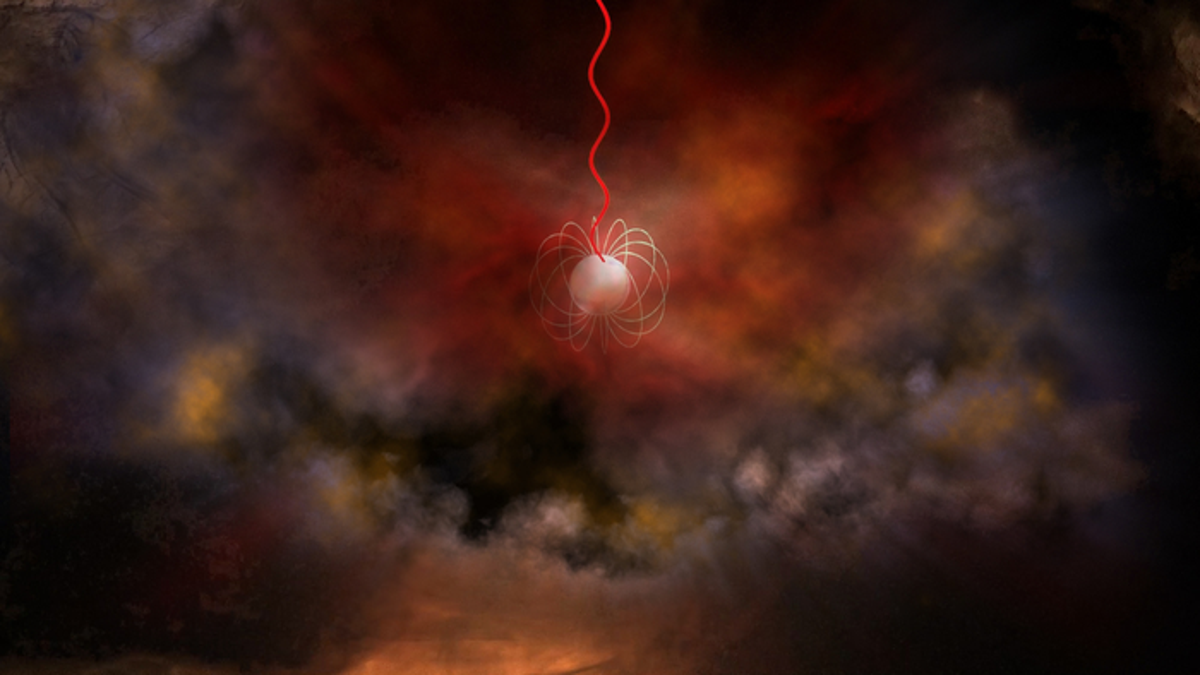Fast radio bursts: New blast of energy coming from space is unlike previous signals, scientists say

Scientists have found a new fast radio burst coming to us from space – from a strange and unexpected location.
The burst is only the second known example of its kind, and has led to new questions about what exactly they are and how they can be used to understand the universe.
The newly discovered object is sending out frequent, repeated blasts of energy, scientists say. It looks similar to the first fast radio burst, or FRB, that had its location found – but is otherwise different from many examples that have been found.
Fast radio bursts are very intense, very brief blasts of energy that come to us from deep in space. They were first detected in 2007, and scientists have found dozens since.
That vast catalogue has brought researchers closer to trying to understand where they are coming from, though their source remains a mystery. Researchers have suggested everything from black holes to alien technology – though probably the most likely explanation is a magnetar, which is a type of neutron star.
Recent research has also suggested that there are different kinds of FRBs, and the newly discovered object further strengthens that argument. Researchers have questions whether those that repeat their signals in this way could be fundamentally different from others.
The increased number of such bursts that have been detected has also allowed scientists to use them as a way to study other parts of the cosmos, as well as being interesting in themselves. They can be used to measure the content of the intergalactic medium, or the space between galaxies.
By watching the way that the blasts travel through space, scientists can better understand the still largely mysterious material that covers much of the universe, between their source and Earth.
However, scientists must make assumptions about the signals and their source to use them correctly. Generally, for instance, scientists think their host galaxies do not make the fast radio bursts disperse, which is expressed using the “dispersion measure”.
But the new fast radio burst does not appear to fit with that picture. While it is in some ways similar to the first ever repeating radio burst to be detected, its galaxy has a vastly larger dispersion measure.
Estimates had suggested that the galaxy should be about 3 billion light years from Earth. But it is being dispersed as if it is coming from a galaxy around three times as far away.
“This means that there is a lot of material near the FRB that would confuse any attempt to use it to measure the gas between galaxies,” Kshitij Aggarwal, a graduate student at West Virginia University. “If that’s the case with others, then we can’t count on using FRBs as cosmic yardsticks.”
It adds yet another mystery to the blasts, which after 15 years and numerous examples remain fascinating and unknown to the astronomers who study them.
More research into FRBs such as the newly discovered one could help solve some of that mystery, as well as answering the questions posed by the recent papers. Scientists hope to better understand how repeating and non-repeating FRBs are different, for instance, and whether they might be coming from sources that are different ages or entirely distinct things.
The findings are reported in a paper, ‘A repeating fast radio burst associated with a persistent radio source’, published in Nature today.
The new FRB has been given the number 20190520B, and its host galaxy is J160204.31−111718.5. It was found using China’s Five-hundred-meter Aperture Spherical radio Telescope, or FAST, in 2019, and further work has been done to examine it since, using a range of different equipment.

